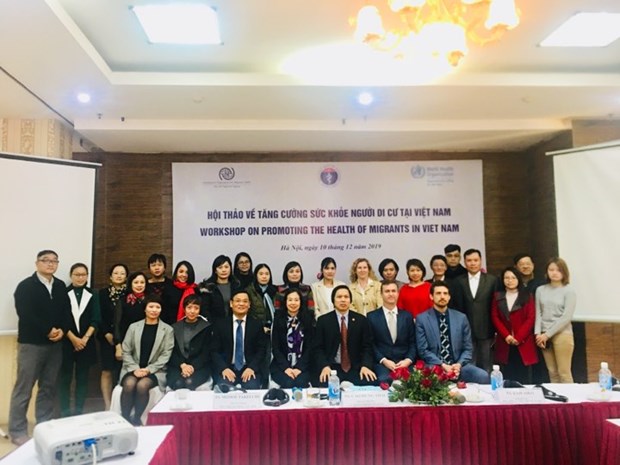
Participants in the workshop pose for a photo (Photo: suckhoedoisong.vn)
Cao Hung Thai, Deputy Director of the MoH’s Department for Medical Examination and Treatment Management, cited an IOM report in 2016 as saying that there were about 2.6 million Vietnamese living and working overseas. Meanwhile, data in 2015 of the General Statistics Office show that the percentage of domestic migration was 13.6 percent.
The rapid increase in population movement around the world, as well as in Vietnam, has had a major impact on community health, he said, noting that the MoH recognized the importance of migrants’ health and pledged to implement the World Health Assembly’s Resolution 70.15 on promoting the health of refugees and migrants.
To achieve the goals of the 2030 Agenda for Sustainable Development, migrants’ health must be fully ensured, Thai added.
Brett Dickson from IOM Vietnam said international standards and conventions on human rights were issued to protect migrant's and refugees’ rights, including the right to health. However, a number of refugees and migrants still lack access to medical services and financial protection in health.
He highly valued Vietnam’s recognition of the importance of migrants’ health and its commitment to implementing Resolution 70.15, considering this an important milestone to improve migrants’ health in Vietnam.
According to IOM Vietnam, internal migration in the country involves mainly young people with 83.9 percent of the migrants aged between 15 and 39. Regarding external migration, the top seven destinations for Vietnamese laborers from January to October 2019 were Japan, Taiwan (China), the Republic of Korea, Romania, Macau (China), and Malaysia.
At the workshop, participants were briefed about the results of a study on migrants’ health in Vietnam and information on regional and global migration. They also discussed solutions to promote migrants’ health in the future./.
VNA
 ASEAN, China strengthen joint efforts to combat cross-border cybercrime
ASEAN, China strengthen joint efforts to combat cross-border cybercrime



